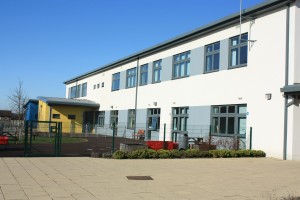Buildings and Environment
School buildings often look surprisingly shabby, and successful schools do not always have the most up to date buildings.Conversely, a school that looks state of the art will not necessary mean it offers the best deal for your child.
- Good schools will make the most of their environment, and will exploit all opportunities to present good display to support learning. Rooms will appear organised and stimulating.
- Schools which have clearly thought about how environment stimulates learning are worth giving consideration to. It should be evident that the school’s creative departments, for example, Art and Technology, have been involved in developing an inspiring environment throughout the building.
- Decoration decisions should take into consideration the promotion and celebration of learning, and not just the caretaker’s favourite colour. Decoration should clearly be a curriculum issue for a school. For example, a Maths’ corridor whose decoration celebrates numbers or a French corridor that alludes to languages is not hard to achieve.
- Graffiti will occur in all schools. However, it is a good sign if schools have a zero tolerance attitude. Most schools will have a real purge on graffiti for open evening, but what you need to find out is what the situation is like day to day. If graffiti is constantly cleaned off, then students will soon stop doing it, and learn to take pride in their environment.
- A set of buildings which give students a sense of ownership is more likely to lead to a happy school. There should be displays which instil a feeling of community, for example, artwork which portrays the students themselves, or is created by students collaboratively. It is worth finding out whether students have been involved in decisions about the school environment.
- You should look out for spaces which show that the institution respects and values its students. The eating area, for example, should be well maintained and student friendly.There should be pleasant places for the students to sit and congregate outside. There may be a garden cultivated by the students themselves.
- A school should be welcoming to visitors with a reception area that is accommodating to all its client groups, and that has had some time and money invested in it.
- The office staff should be professional and friendly. The office is a good indication of the ethos of the whole school.
- It is always a nice touch if students are used as monitors to welcome visitors and run errands.
- It is a good idea to find out whether students are allowed in the building at break and lunchtimes and if not,why not. It is a cause for concern if they are not trusted in the building.
- The right school for your child should be recently decorated. It does not cost much to keep an interior freshly decorated, and it shows that the school is valued by those who work in it.
- All secondary schools were involved in the government programme Building Schools for the Future which came to an end in 2010. The aim was to rebuild or renew every secondary school in England over the next 10-15 years. A small number of schools were rebuilt. This programme has now been halted.
- It is important to find out where the school you are considering stands with regard to building work. The positive effects of building work can be long term. Whilst the building is taking place, there are often discipline and behaviour issues, because there are suddenly lots of tempting, dangerous places that are no go areas for the students. Usually, if students are put up in temporary accommodation for any length of time, behaviour management and quality of learning issues can develop. Learning can suffer if pupils are temporarily rehoused in unfamiliar rooms. If your school of choice has a building programme planned, you need to be confident that it will be managed in the students’ best interests.
- New builds are usually very popular with parents. However, it is important to remember that buildings do not in themselves make good schools.
Further Information
Informal Visit
Pop into the school on a pretext, ask for the prospectus, or ask when their open day is, even if you know already. It is important that you feel you are treated respectfully and professionally.
Visit
Make sure you see the school in the daylight.This is another good reason to go on a tour during the day.Often, on open evenings, you get no real sense of the school’s outdoor space because it is dark outside.

Add a comment